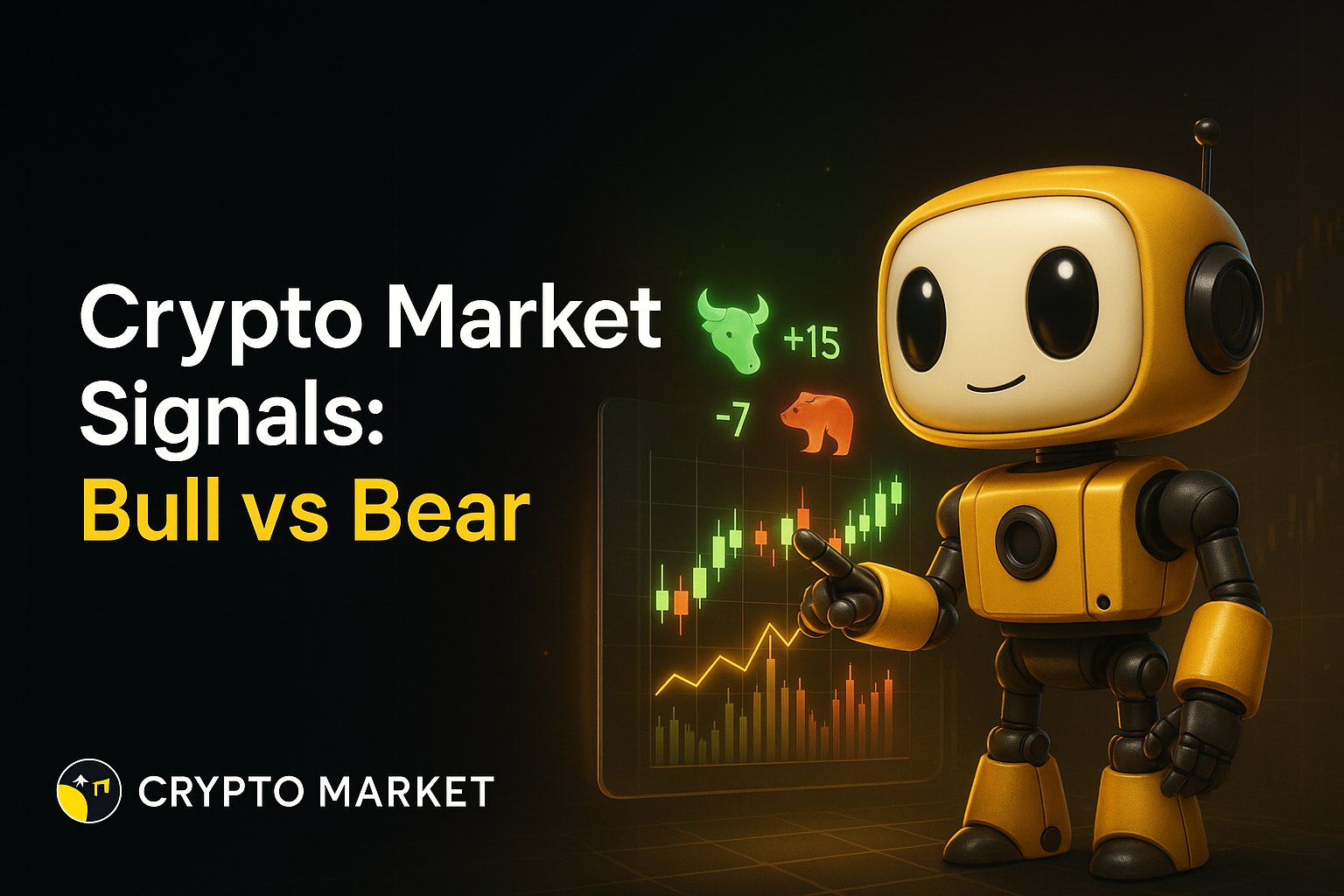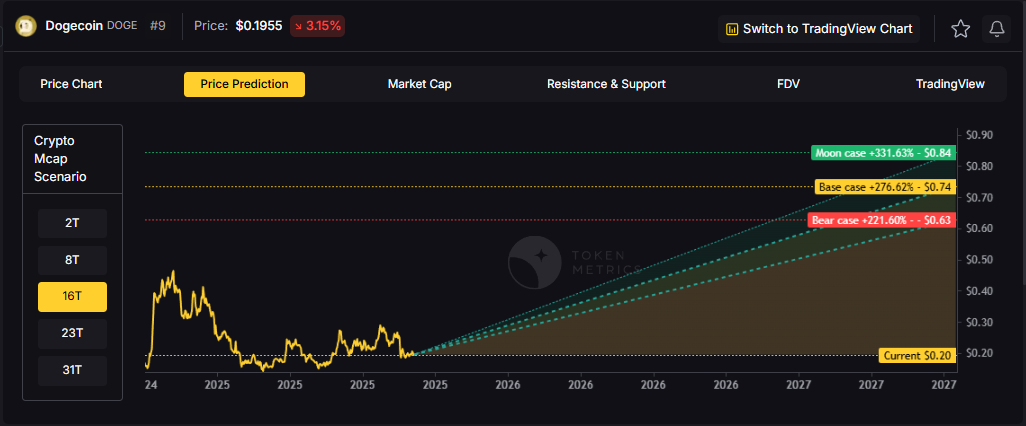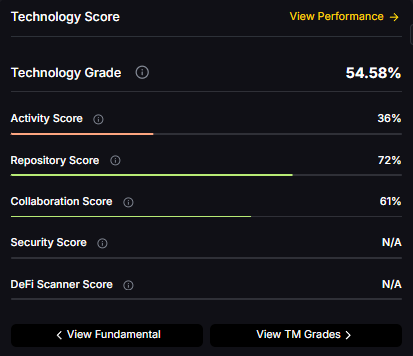
Understanding Proprietary Market Signals: How Crypto Indices Detect Bull and Bear Markets

In the fast-paced and often unpredictable world of cryptocurrency, understanding how crypto indices detect bull and bear markets is crucial for investors aiming to maximize profits and minimize losses. Unlike traditional financial markets, where a simple 20% price drop might signify a bear market, the crypto market is far more volatile, with frequent sharp price fluctuations that do not necessarily indicate a shift in market regime. This volatility demands more sophisticated tools that analyze a wide range of data points, enabling investors and traders to distinguish genuine bull and bear markets from short-term noise.
Traditional indicators commonly used in traditional finance often fall short when applied to digital assets. To address this challenge, proprietary market signals have emerged as a useful tool that leverages advanced analytics, including artificial intelligence and on-chain data, to detect market regime shifts with greater accuracy. This article explores the limitations of legacy indicators, the architecture behind proprietary signals, and how platforms like Token Metrics are revolutionizing the way market phases are identified and acted upon.
The Inadequacy of Traditional Indicators
Many newcomers to crypto rely heavily on legacy technical indicators such as the Relative Strength Index (RSI), Moving Average Convergence Divergence (MACD), and simple moving averages. These tools have a long history in traditional markets, but they exhibit critical weaknesses when applied to the crypto market cycle.
The Lagging Problem
Traditional indicators are inherently backward-looking. For example, RSI may only indicate that Bitcoin is "overbought" after a significant rally has already occurred, while MACD crossover signals often lag behind actual trend changes by days. This delay means that by the time traders receive warnings, institutional investors and experienced traders have often already adjusted their positions. The widely cited 200-day moving average (MA) is a classic example: it requires 200 days of data to calculate, making it slow to react to rapid market shifts. When Bitcoin’s price dropped below the 200-day MA in March 2025, many declared a bear market, but this signal came too late to capture the onset of the downturn effectively.
The False Signal Epidemic
Crypto's notorious volatility generates frequent false alarms with traditional metrics. A 20% price drop—enough to define a bear market in stocks—can be a routine correction or consolidation in crypto, occurring without a genuine regime change. Bitcoin, for instance, can experience significant price trends downward during an overall bull market and then resume its upward momentum. Relying on these traditional signals often results in premature selling during temporary bear phases or missed opportunities during early bull phases.
Single-Factor Blindness
Legacy indicators typically focus on a single dimension, usually price action. They overlook critical factors like on-chain activity, wallet flows, network fundamentals, trading volume, market sentiment, liquidity, and broader macroeconomic influences such as interest rates or the wider economy. This narrow view produces an incomplete and sometimes misleading picture of the market’s health.
The Architecture of Proprietary Market Signals
Proprietary market signals represent a significant evolution beyond traditional tools by incorporating three key innovations: multi-factor analysis, machine learning adaptation, and signal confluence validation.
Multi-Factor Analysis
Advanced systems evaluate dozens of independent data sources spanning multiple categories to build a nuanced understanding of market conditions:
- Price Dynamics: Beyond just the current price, these systems analyze momentum shifts, volatility patterns, support and resistance levels, breakout formations, and historical pattern recognition.
- Volume Intelligence: They assess trading volume across exchanges, volume-weighted price metrics, detect anomalous volume spikes, and monitor liquidity depth.
- On-Chain Fundamentals: Key metrics include active address growth, transaction counts, whale wallet movements, exchange inflow and outflow ratios, coin age distribution (HODL waves), and network fee trends.
- Sentiment Signals: These incorporate social media velocity and tone, the greed index, search trends, and institutional sentiment indicators.
- Market Structure: Factors like Bitcoin dominance shifts, altcoin season indicators, asset correlation patterns, and sector rotation signals are analyzed.
- Macroeconomic Context: Broader influences such as Federal Reserve policies, global liquidity conditions, regulatory developments, and institutional capital flows are also factored in.
By integrating these diverse data points, proprietary systems develop a holistic view of the crypto market, enabling more accurate detection of bull or bear market regimes.
Machine Learning Adaptation
Unlike static technical indicators, the most sophisticated proprietary systems employ machine learning models that continuously learn from historical outcomes. These AI-powered models analyze thousands of past market setups to identify which combinations of factors preceded genuine breakouts or downturns. This adaptability is critical because the crypto market cycle evolves rapidly; patterns effective in 2020 may not hold in 2025 as the market matures and institutional participation increases.
By constantly refining their algorithms based on new data, these systems maintain their effectiveness across different market phases, including bull markets, bear markets, and sideways consolidations.
Signal Confluence
A defining feature of proprietary signals is the requirement that multiple independent indicators align before a signal is triggered. Instead of reacting to any single metric crossing a threshold, these systems wait for a confluence of price action, volume patterns, on-chain metrics, and sentiment indicators to confirm a setup.
This multi-factor confirmation dramatically reduces false positives. When several data points simultaneously indicate bullish conditions, the probability of a true bull market increases significantly compared to relying on one indicator alone. The same applies to detecting bear markets, where combined signals of selling pressure, declining volume, and negative sentiment provide stronger evidence of a downturn.
Token Metrics: Setting the Standard for Market Intelligence
Token Metrics has emerged as a leader in applying proprietary signal technology to the crypto space, offering what many consider the industry's most sophisticated market detection system. As a cryptocurrency investment research firm leveraging AI and machine learning, Token Metrics analyzes over 6,000 projects, processing more data points and generating more accurate signals than most competitors.
The Token Metrics Signal Architecture
Token Metrics’ Bullish and Bearish Signals operate through a multi-layered system that integrates over 80 data points per token. These include price momentum shifts across various timeframes, higher trading volumes and anomalies, interactions with support and resistance levels, on-chain activity strength, whale wallet flow patterns, social sentiment analysis, and liquidity and order book depth.
Importantly, signals are only triggered when multiple critical factors confirm the setup, following the signal confluence approach that eliminates many false alarms common in traditional methods.
AI-Powered Learning
What sets Token Metrics apart is its continuous machine learning-driven refinement. The platform’s AI models train on outcomes, not just patterns, learning which factor combinations consistently lead to real breakouts or downturns. This outcome-based training ensures the system remains responsive to evolving market dynamics, such as increased institutional adoption and the rise of tokenized real-world assets.
Rigorous backtesting against extensive historical data ensures signals maintain accuracy across bull and bear cycles, avoiding deterioration that plagues static indicators.
Real-World Performance
Token Metrics regularly showcases its signal effectiveness with documented examples. For instance, a Bullish Signal on a lesser-known token, $DEGEN, preceded a +35% breakout despite minimal social media attention. Conversely, a Bearish Signal on $ENA helped users avoid a -22% correction. These examples illustrate how proprietary intelligence offers insights that can assist in managing market risks and opportunities.
How Regime Switching Works in Practice
The practical application of proprietary signals is evident in automated index strategies like Token Metrics’ TM Global 100 Index, which demonstrates systematic regime switching based on real-time market intelligence.
The Detection Process
Token Metrics continuously monitors its proprietary indicators, synthesizing price action, volume, on-chain metrics, sentiment data, and macroeconomic factors into comprehensive assessments of market regimes. When multiple signals align bullishly, the system classifies the environment as a bull market and maintains full exposure to the top 100 cryptocurrencies by market capitalization, capturing upside potential across the ecosystem.
When bearish signals dominate, indicating elevated risk and selling pressure, the index automatically shifts holdings into stablecoins like USDC, preserving capital during downturns often referred to as crypto winter.
The Advantage Over Manual Trading
Manual market timing is challenging for individual investors who must juggle numerous indicators, overcome emotional biases like fear and greed, and execute complex portfolio adjustments efficiently. Proprietary systems remove these obstacles by making emotionless, data-driven decisions automatically. This disciplined approach helps avoid panic sells during bottoms and impulsive buys at tops, common pitfalls for many traders.
Transparency Without Complexity
While the underlying AI and multi-factor models are complex, Token Metrics maintains transparency by providing users with a Market Gauge showing current regime assessments, interactive portfolio visualizations, detailed transaction logs, and performance analytics. This openness fosters trust while safeguarding the proprietary nature of the algorithms.
Beyond Binary: Understanding Market Nuance
Sophisticated proprietary systems recognize that markets are not simply in a binary bull or bear state but operate along a spectrum with varying conviction levels. Token Metrics’ signals can indicate conditions ranging from "strong bullish" to "strong bearish," allowing for nuanced position sizing and risk management.
During strong bullish phases, indices maintain maximum exposure to volatile assets and emerging projects with strong demand. In neutral or uncertain periods, exposure is moderated, and in strong bearish environments, defensive allocations to stablecoins are preferred. This approach helps to optimize returns and manage risk effectively.
The Competitive Moat of Proprietary Intelligence
The significance of proprietary signals lies in the information advantage they offer. Investors who effectively detect regime shifts early can capitalize on opportunities before the broader market recognizes them. By the time mainstream media or lagging indicators declare a bear or bull market, those relying on shared signals may have missed the optimal entry or exit points.
Token Metrics invests heavily in AI infrastructure, data science, and comprehensive data gathering to sustain its competitive edge. Its ability to analyze billions of data points and adapt models swiftly provides insights difficult to replicate manually, democratizing sophisticated market detection for individual investors.
Practical Application for Investors
Understanding how crypto indices detect bull and bear markets is vital, but the key lies in how investors apply this knowledge:
- Active Traders: Utilize Token Metrics’ Bullish and Bearish Signals to time entries and exits with higher precision. Confirm signals with high Trader Grade tokens for better accuracy.
- Index Investors: Rely on automated regime switching within the TM Global 100 Index to adjust exposure according to market conditions without manual intervention.
- Research-Oriented Investors: Use the Market Gauge and signal history to inform portfolio adjustments and risk management strategies.
- Risk Managers: Treat bearish signals as prompts to reduce exposure or increase allocations to stable assets, aligning with personal risk appetite.
The Future of Market Intelligence
As the crypto ecosystem matures, with innovations in DeFi, AI, and tokenized assets, the need for advanced analytics will intensify. Token Metrics plans to expand its proprietary signal technology with sector-specific indicators, enhanced natural language processing, integration with automated trading, and deeper on-chain health metrics to keep users at the forefront of market intelligence.
Conclusion: Intelligence as Competitive Advantage
In today’s complex financial landscape, accurately identifying market regimes is essential for systemic risk management and opportunity capture. Proprietary signals, powered by AI and multi-factor analysis, offer a comprehensive and adaptive approach that surpasses traditional indicators. Platforms like Token Metrics provide invaluable insights that help investors navigate volatile markets effectively. Recognizing regime shifts early and acting on them systematically can be the difference between sustained success and missed opportunities. Equip yourself with cutting-edge tools to stay ahead in the evolving crypto world.
Discover Crypto Gems with Token Metrics AI
Token Metrics uses AI-powered analysis to help you uncover profitable opportunities in the crypto market. Get Started For Free
What are crypto indices?
Crypto indices are financial instruments that track the performance of a basket of digital assets, typically weighted by market capitalization or other criteria. These indices provide a broad overview of the cryptocurrency market, making it easier to monitor overall trends and benchmark returns without focusing on individual tokens.
How do proprietary signals differ from traditional indicators?
Proprietary signals integrate multiple data sources—including price action, on-chain data, sentiment, and macroeconomic factors—while leveraging machine learning and advanced analytics. Traditional indicators often rely on single-factor price analysis. By synthesizing diverse data, proprietary signals are better equipped to detect genuine market regime shifts and reduce false signals.
How does Token Metrics generate its market signals?
Token Metrics employs a multi-factor, AI-driven system that analyzes over 80 data points per token, including price dynamics, volume, on-chain activity, liquidity, and sentiment. Signals are only triggered when several independent metrics confirm the same market regime, ensuring robustness and reducing the risk of false alerts.
Can individual investors use proprietary market signals?
Yes. Platforms like Token Metrics provide access to proprietary signals, making advanced analytics available to retail investors. This democratizes the sophisticated tools once reserved for institutions and enables individuals to make more informed decisions and manage risk effectively.
How do crypto indices handle market volatility?
Advanced crypto indices employ real-time monitoring and regime-switching algorithms, allowing them to shift allocations—from full exposure to stablecoins—based on current market conditions. This adaptability helps manage risk and reduce the impact of extreme volatility commonly observed in the crypto market.
Disclaimer
This content is for informational and educational purposes only and should not be interpreted as financial advice, investment recommendations, or an offer to buy or sell any asset. The information provided is accurate to the best of our knowledge at the time of publication. Always conduct your own research and consult with a professional advisor before making investment decisions. Cryptocurrency markets are volatile, and past performance is not indicative of future results.

.svg)

Create Your Free Token Metrics Account

.png)




%201.svg)
%201.svg)


%201.svg)





















.svg)




.png)